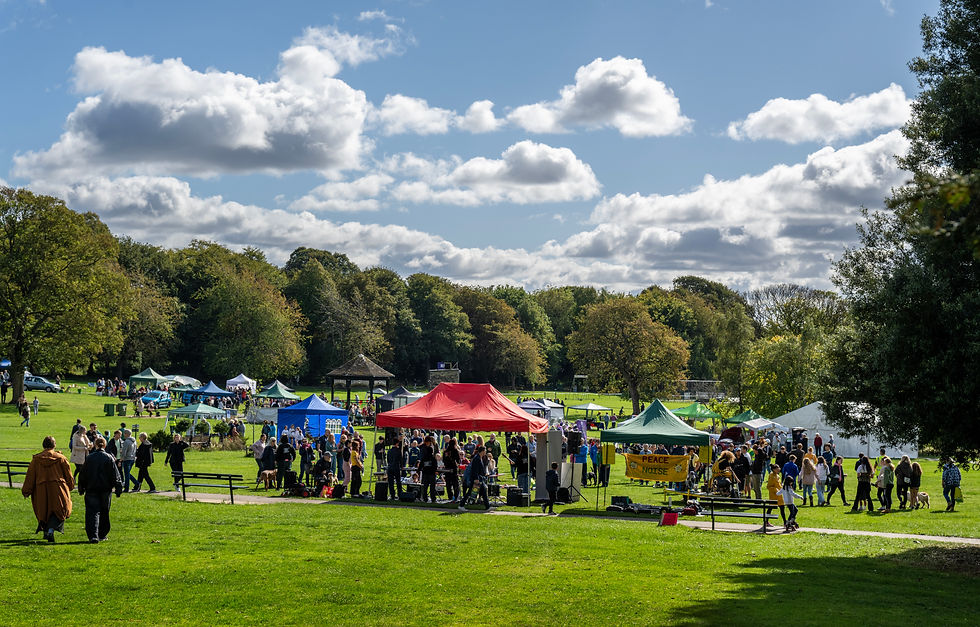Sport for Good - Good for Sport
- none
- Sep 1
- 4 min read
The Sport For Good project offered one-to-one support to sports clubs across West Yorkshire, including - among other things - help for them to develop a bespoke Environmental Action Plan.
Here, Rob Greenland, who worked alongside Voluntary Action Leeds to offer this support, outlines the support that’s been available through this project - explaining how he took a practical approach based on achievable, affordable actions. You can read more about Rob's wider work around climate here.
For this piece of work, we took inspiration from the approach that Sport England has adopted in its work supporting local sports clubs to engage with the climate crisis.
In their Every Move sustainability strategy, they emphasise the impact of our increasingly volatile weather patterns on levels of participation in sport and physical activity.
They talk about how more frequent heatwaves - like the four we’ve seen in summer 2025 - can have a negative impact on how often we participate in our favourite sport or activity.
Longer term, it could also put at risk the viability of some of our clubs - if your cricket pitch keeps flooding, there’s probably only so many times you can keep bouncing back.
Sport England have been encouraging groups to consider developing their own Environmental Action Plans - so that’s what we focused on too at Sport For Good.

Working on a one-to-one basis with clubs, I met with them to take them through the process of coming up with a meaningful, realistic, affordable action plan - all with the aim of reducing their environmental impacts whilst trying to bring wider positive social benefits.
We all have impacts on the world around us - that’s life. So in our work together, we’d start by thinking through what the environmental impacts are of the club’s activities.
Every club’s circumstances are different. But to help with the conversation, I’d prompt people to think about these eight themes:
Travel
Energy consumption
Waste generation
Water usage
Facilities - construction and maintenance
Food and drink
Supply chains - including kit and equipment
Events
Understandably, given the steep rise in energy bills over the last few years, energy was often a key area of discussion - alongside broader themes around building use, insulation etc. Travel is often a significant impact too, particularly in relation to members getting to training or events.

And for sports clubs, thinking about your supply chain is often useful too - including in relation to kit and equipment.
Once we’d done some work to understand the main areas of impact, we’d get creative and think about what we could do about it.
Depending on the club and the resources it had, I might suggest that we focus on three or four main areas of impact first. And then we’d think about the free, low-cost or realistically-fundable things that they could do.
Copley Cricket Club in Calderdale decided to focus on energy consumption. They’ve recently installed LED bulbs in their clubhouse and are fundraising to get solar panels on their roof (with protection from cricket balls of course).
One of the other areas they looked at was kit and equipment, and as part of the plan they decided to give their kit exchange more of a push next year. Encouraging more sharing of kit and equipment can cut down on the environmental impacts of buying new stuff and just as importantly it can help to break down barriers to new people getting involved in a club. Like Sport England have said, taking climate action can also be about broadening participation - and tackling social inequalities.
Another club I worked with to develop an Environmental Action Plan was Airecentre Pacers, a running club based in Leeds. They run an iconic local race every Boxing Day - the Chevin Chase - which attracts over 1,500 runners.
For their plan, one of the themes we focused on was travel - recognising in particular that getting to their race by public transport on 26th December is a challenge. So we came up with ideas around how they can continue to encourage people to car share, whilst also making sure their pre-race pack includes information about bike parking.
We also concentrated on continuing to improve their excellent tree-planting scheme, through which they offer runners the opportunity to plant a tree instead of getting a commemorative T-shirt.
Last year over 400 - around 20% - of runners chose to support tree planting. What’s great about their particular tree-planting scheme is that they work with Leeds City Council and Love Leeds Parks to plant trees locally - and they offer runners the opportunity to get involved with a tree planting day.
This brings real, tangible, visible local impacts - and helps people to understand the positive difference they can make.
In my work with clubs, I made sure they were left with a practical, realistic action plan for the year ahead. I also introduced them to the Sustainability Team at West Yorkshire Combined Authority - so that they can find out more about support and funding that may be available from them. With help from Voluntary Action Leeds, I also made sure that they were aware of potential sources of funding, including Sport England’s Movement Fund.
The aim is that, by focusing on realistic, achievable actions which can bring broader positive benefits, we can make the idea of “climate action” feel meaningful and relevant to local community sports clubs. Our clubs play such an important role in our communities - and they can play a vital role in our response to the big challenges of our changing climate too.




Comments